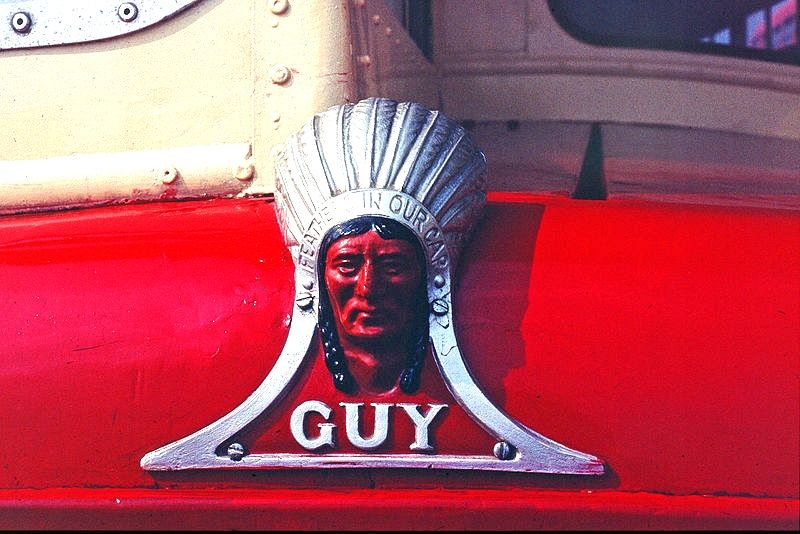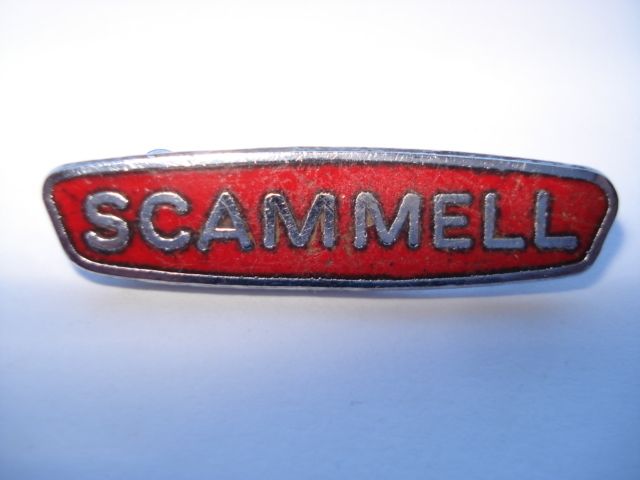Best Ergomatic Cabbed-Lorry Model? PART 15.Page 21.TRUCKNETUK.
LEYLAND 700-SERIES FIXEDHEAD HEADLESS WONDER DIESEL ENGINE - DR.ALBERT D.FOGG’S IDEA AND PROJECT.
Carryfast.
I draw your attention to what Gingerfold has correctly said about Michael Knowles:-
“Thanks for the link. I will read it over the weekend. All I will say if it is by Mike Knowles…, well,this man is well known in certain circles for opinions and views that are eccentric to say the least.Gingerfold.”
And this is what I said in regard to Michael Knowles in my POST 13 of this thread:-
VALKYRIE,“But Michael Knowles seems to be obsessed with feet,inches,fractions,meters,centimeters,milimeters,
fixings and fastenings in the British Commercial Vehicle Industry,and has had several articles
published on this overall subject,namely The Metrication of the British Commercial Vehicle
Industry,in various publications,including the HISTORIC COMMERCIAL VEHICLE SOCIETY’S Historic Commercial Magazine.
Some of what he says in this report is wrong.For example,as I said in my PART No. 10 of this
thread:-
“The Leyland Group had cylinder head gasket problems with some of it’s AEC and Leyland
engines,but,although these blown gasket problems were largely cured,it was our old friend
Dr.Albert Fogg  that came up with the idea of using a fixed cylinder head for the new engine
that came up with the idea of using a fixed cylinder head for the new engine
range”.
So it wasn’t Dr.Mueller’s idea.”
So add the above two comments together,plus the other fact that Doug Jack is almost certainly
a more accurate and reliable historian and writer with more balanced views,and you must come
to the conclusion that it was Dr.Albert D.Fogg,Leyland’s Director of Engineering,who was
the mastermind of the Leyland 700-Series Fixedhead Headless Wonder Diesel Engine.
I said that Dr-Ing Alfred Mueller worked for Leyland until the early 1960s,Albert Fogg became
Leyland’s Director of Engineering in 1964 - Doug Jack said that Albert sometimes came up with
unconventional solutions to technical problems,and he somehow did not fully fit at Leyland.
Thus,bearing all that in mind,it isn’t really suprising that Albert came up with the Leyland
700-Series fixed cylinder head engine.
LEYLAND L60 TWO STROKE MULTI-FUEL TANK ENGINE.
As for the fascinating and MUSICAL Junkers aeroplane two stroke diesel engine-inspired
Leyland L60 19-Litre 6-cylinder Opposed Piston Two Stroke Multi-Fuel Engine for the Chieftain
Tanks,surely it was more reliable than it’s made out to be. It also offered a better power to weight ratio than a four-stroke engine - tanks are heavy,and the designers wanted to save weight,yet use a powerful engine that was light in weight,hence the Leyland L60 engine which was the ideal engine.
AEC SUPER MANDATOR V8 3VTG CONCEPT-PROJECT-PROTOTYPE 6x4 TRACTIVE UNIT.
[ZB] Anorak.
This is what I said in my POST 4 in this thread:-
VALKYRIE,"
AEC 3VTG CONCEPT PROJECT LORRY.
As I said in my last post,the wise AEC 3VTG Concept Project Lorry was the wise and inspired idea
of the boss of AEC,Dr.Albert D.Fogg,who obviously wanted to copy Volvo with it’s refined
American-style F88-F89 lorry models,and produce a refined American-style AEC heavy lorry range 
And in the words of the great Barry Norman:“And why not”…  And why not indeed,because
And why not indeed,because
other lorry manufacturers were doing the same thing 
The interior of the AEC 3VTG cab was well-appointed,with Bostrom Viking seats,a very
comprehensive instrument panel and good cross cab access. The lorry’s engine bay allowed more air
to circulate around the engine than with the Ergomatic Cab,and it’s AEC 801 Series V8 engine had
a much larger header tank,radiator and cooling fan than the AEC Mandator V8.
Albert Fogg wanted to produce a better cab than the Ergomatic,and he was well on the way in doing
this with his AEC 3VTG Lorry  He realised that the Ergomatic was not big enough,it produced
He realised that the Ergomatic was not big enough,it produced
cooling problems for the engines,especially in the tropics,it had design flaws and,according to
Albert Fogg,it was not suitable for long distance motorway journeys. So entered the AEC 3VTG
Project-Concept-Prototype Heavy Lorry for all of the above reasons that I’ve listed 
But,as I’ve already stated,Leyland mismanagement very misguidedly scrapped the AEC 3VTG Programme
 …and by doing so,it was yet another long,long,sharp,sharp nail in the unholy coffin
…and by doing so,it was yet another long,long,sharp,sharp nail in the unholy coffin
of the British Leyland Motor Corporation! 


AEC 3VTG6RGAE 090 Mk1 Project-Concept-Prototype 6x4 Tractive Unit Specifications:-
Cab: Motor Panels Tilt Cab,modified.
Engine: AEC 801-Series-AVM8/801,13.1-Litre,V8 Diesel Engine,producing 272 BHP @ 2600 rpm,638 lbs
ft of torque @ 1400 rpm.
Gearbox:Leyland-Self Changing Gears -SCG Pneumocyclic 10-forward speed Splitter Semi-Automatic
Gearbox.
Rear driving axles: Leyland Group Hub Reduction Drive Axles.
Year:1968.
Not only was Dr.Albert D.Fogg the General Manager of AEC Ltd,he was a member of the board of the
British Leyland Motor Corporation,Deputy Managing Director of this corporation and Director of
Engineering of British Leyland. So his above various positions within British Leyland allowed him
a substantial amount of influence within British Leyland and at AEC,thus,the AEC 3VTG being
Albert Fogg’s pet project,he probably had every intention in eventually turning it in to a
production lorry to take on the likes of the Volvo F88-F89,Scania LB110,etc 
But of course,British Leyland mismanagement very misguidedly scrapped the 3VTG project 
,which proved to be fatal for British Leyland in the long - as did the scrapping of the AEC
marque!!! 

 ."
."
I therefore based the following statement in my POST 13 on everthing that I had written in the above quote:-
VALKYRIE,"Albert Fogg’s AEC Super Mandator V8 3VTG High Tower 6x4 Tractive Unit,which looked like a Peterbilt High Tower COE,and was also in the same idiom as an Australian Atkinson High Tower COE,was designed for better engine cooling,better driver comfort and high power for long distance
heavy duty freight trunking,and would have been for sale in British,European,Australian,New
Zealand and other markets - as I said my PART 4:AEC and Albert Fogg were wisely doing a Volvo
F88-F89! 
 "
"
Since this was a prototype,and not a production example,it is fair to say that a production
version would have been moderately re-styled to look more English-European than American,while
also appealing to the Australian,New Zealand,etc,markets,who buy a lot of American heavy motor
trucks-lorries 
MULTI MARQUE MOTOR MANUFACTURERS - THERE IS NOTHING NEW UNDER THE SUN 
The General Motors Corporation was formed in 1908,which brought together famous American motorcar
marques,such as BUICK,CADILLAC,OLDSMOBILE,and later on CHEVROLET,LASALLE,PONTIAC,OAKLAND,HOLDEN,
OPEL,VAUXHALL,including CHEVROLET and GMC commercial vehicles,and so on.Many of these are still in business and are still owned by General Motors.
The White Motor Company of Cleveland,Ohio,USA,built up an empire on Leyland lines from the 1940s:
AUTOCAR,DIAMOND T,DIAMOND REO,EUCLID,REO,STERLING where all part of White.
Austin and Nuffield merged to form the British Motor Corporation - BMC in 1952,with MORRIS,
RILEY,MG,WOLSELEY,AUSTIN HEALEY,AUSTIN,VANDEN PLAS,METROPOLITAN,etc,under it’s control.
The Rootes Group consisted of HILLMAN,HUMBER,SINGER,SUNBEAM,SUNBEAM TALBOT,TALBOT Motorcars,
and COMMER,HARRINGTON,KARRIER,SUNBEAM,TILLINGS -STEVENS and VULCAN Commercial Vehicles,plus DODGE,with the Chryslertakeover of Rootes,joined the line up in 1964.
I could mention a few more pre-1960 motor vehicle groups that consisted of more than one marque.
As for the tragic deletion of the Bussing marque  ,a well-known manager of MAN said that MAN
,a well-known manager of MAN said that MAN
should never have stopped making Bussings! 
And in regard to IVECO,they very unfortunately dropped so many marques that they ended up
being the weakest European commercial vehicle manufacturer  …and they probably still are
…and they probably still are 
And here is a word of warning:-If some of the present European and Scandinavian commercial
vehicle makers vanish through mergers and takeovers  ,they will be replaced by Japanese,Russian
,they will be replaced by Japanese,Russian
American,Chinese,etc, manufacturers!  That is what happened to the British Commercial Vehicle Industry:British marques vanished
That is what happened to the British Commercial Vehicle Industry:British marques vanished 
 to be replaced by Scandinavian and European marques
to be replaced by Scandinavian and European marques  …
…
Tragic,scandalous and criminal! 

As with AEC and Scammell in some of my most recent posts,I’ll let yet another unfortunate
victim of Leyland mis-management have the last say in this POST 15:-The great Guy marque
with it’s wonderful American red indian mastcot badge and Feathers In Our Cap slogan 





 :-
:-

VALKYRIE
![]()
![]() ,Albert Fogg walked out of Leyland!
,Albert Fogg walked out of Leyland! ![]()
![]() He must have known that a 500 CID engine was just too small and was not fit for purpose to work in 32 ton GTW lorries
He must have known that a 500 CID engine was just too small and was not fit for purpose to work in 32 ton GTW lorries ![]()
![]()
![]()
![]()
![]()
![]() …LIKE HELL WE DID - NOT!!!
…LIKE HELL WE DID - NOT!!! ![]()
![]()
![]()
![]()
![]()
![]()
![]()
![]() So the Natural-operated lorry next to the Mercedes-Benz lorry
So the Natural-operated lorry next to the Mercedes-Benz lorry![]()
![]()
![]()
![]() Which shows a callous disregard and disrespect for the companies that made these vehicles,their dealers and their customers
Which shows a callous disregard and disrespect for the companies that made these vehicles,their dealers and their customers ![]()
![]()
![]()
![]()
![]() - and this kind of ludicrous carry-on made people rightly turn away from Leyland and it’s products!!!
- and this kind of ludicrous carry-on made people rightly turn away from Leyland and it’s products!!! ![]()
![]()
![]()
![]()
![]()
![]()
![]()
![]()
![]()
![]()
![]()
![]()
![]() :-
:-


